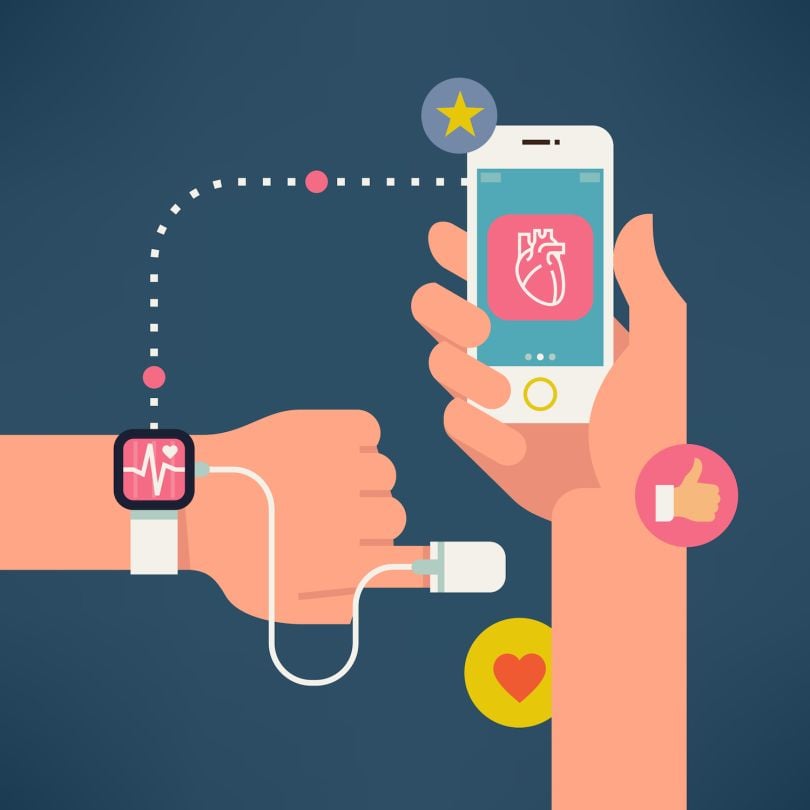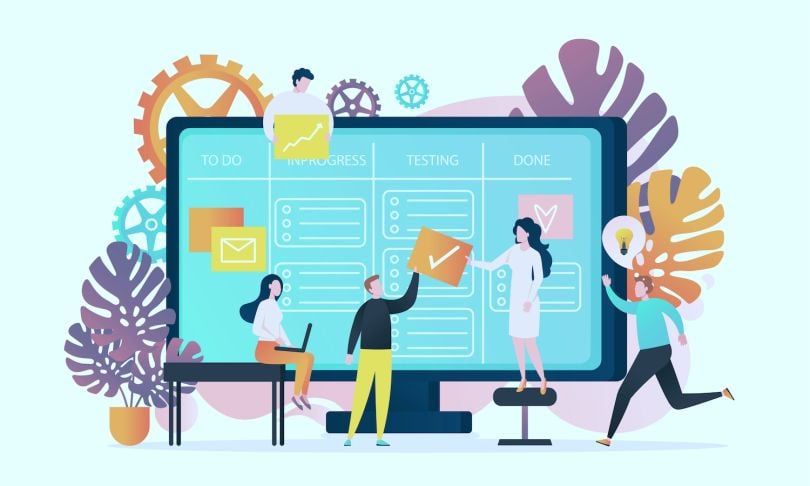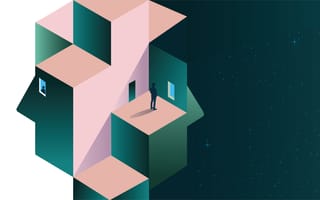Back in 2007, fresh out of college with a degree in psychology from Gordon College outside Boston, Rob Gifford was working as a case manager for a social services agency called Triangle, helping people with disabilities find job training and employment. He wasn’t entirely fulfilled, but his professional restlessness had little time to stew; a year and a half later he got laid off, along with 30 percent of the staff.
“Our agency got its funding cut,” Gifford said. “I remember getting that phone call and being like, ‘Oh shit, what do I do now?’”
In the end, things worked out well for Gifford. Today, he is Mad*Pow’s managing director of experience design. There, he oversees projects at the far edge of UX design that leverage behavioral research.
But the layoff, like those many tech workers have experienced in recent months, left him jilted. The Great Recession was in full swing, the job market was bleak, and there were moments when his mind would wander to worst-case scenarios.
Thankfully, he had a couple roommates at the time who knew how to put together a website. He started to teach himself Adobe Illustrator and Photoshop, and learned how to code in HTML.
“And what we actually found was there were a lot of people in the same shoes. They were getting laid off at the same time. And so we made a business out of creating websites and doing marketing and graphic design for these small businesses and nonprofits that were starting to arise,” Gifford said.
The business was called Small Sparrow Design, and with its founding, he learned a lesson he believes can be applied to many designers experiencing the pain of layoffs today: Look at the jolt as an opportunity.
“Are there opportunities for you to start your own thing or to consult around a certain topic that’s going to be more in demand?”
“Maybe you had a certain plan for your career, like you were going to work at this great company for a little while and get promoted or whatever. And that’s not going to happen," Gifford said. “But there are alternative paths that might be as exciting.”
The hiring surge at companies like TikTok, Instacart and Docugami, according to Gifford, may be only a hint of what’s to come, as in 2007 when the iPhone ushered in a new era in mobile-first design that opened doors for many UX and UI designers.
For early stage and mid-level professionals, that means there are unfulfilled niches related to digital design and product development. “Digital health is going to be huge, anything contactless, delivery services. There’s a whole platform shift in how we interact with brands and technology,” he said.
Pursuing these opportunities, though, means thinking not only about your talents, and what you would ideally like to do, but also asking “are there new startups coming out that might be really interesting to work with?” he said. “Are there opportunities for you to start your own thing or to consult around a certain topic that's going to be more in demand?”
Gifford believes the answer is yes.

Find a Mentor. Think Like a Consultant.
If optimism and risk-taking are the linchpins of a good rebound strategy, as his story suggests, there’s a place for prudence too.
Gifford said Small Sparrow Design was a good gig, for awhile — they built a small, niche client base. One of their loyal customers, for instance, made custom wedding cards for traditional Indian nuptials. The three partners were making enough to support themselves in a three-bedroom walk-up in Boston — but Gifford, who had assumed the role of project manager, was hungry to elevate his design credentials.
“What I found was I had really hit a plateau with all those skills, working on these small sites,” he said.
His antsiness was building at a time when most designers were generalists, with underspecified titles like interactive designer, and only the biggest tech companies were doing bona fide research.
“I would say, at the beginning half of your career, you really need to focus on learning. Don’t focus on the brand name of the company. Don’t focus on the salary.”
For Gifford, who has always taken a fairly intentional view of his career, the time had come to seek a mentor who would take him under his wings. He found one in Glen Kennedy, a well-known creative director at the interactive design agency Digital Bungalow. It was a pivotal turn in his career development, and the sort of early apprenticeship he recommends to others.
“I would say, at the beginning half of your career, you really need to focus on learning. Don’t focus on the brand name of the company. Don’t focus on the salary,” he said.
Another deliberate strategy that has paid off well as Gifford’s career has matured was his decision to work largely as a consultant, rather than to pursue exclusively in-house roles.
“It allows you to be adaptable and address different design and thinking skills,” he said. “And, in general, I think, as a consultant, you’re probably at a little bit higher premium than if you’ve got only in-house roles, unless they’re for super-high-end companies.”

Read. Learn. Become an Expert.
By 2012, Gifford’s career was in full swing. He left Digital Bungalow to take a principal designer position in the human factors engineering division of the electrical device company Underwriter’s Laboratory, which opened his eyes to the value of usability research. They were pros at it, because they needed to be — working with medical device companies like Baxter and Stryker on high-stakes projects, where usability meant more than shoehorning users through the funnel.
“As a consultant, you’re probably at a little bit higher premium than if you’ve got only in-house roles, unless they’re for super-high-end companies.”
“If nurses are misinterpreting the information and putting the wrong dose into an IV that can cause someone to die, right?” Gifford said. “So you have to get to a good design pretty quickly, but then also rigorously test the prototype you’ve created.”
He read up on medical and diagnostic device books by Michael Wiklund, whose consulting firm had been acquired by UL, and the applied research he took part in was foundational to the U.S. Food and Drug Administration’s clearance of sophisticated mobile and web apps, for which he developed the information architecture. In eight months, he “learned probably more than I would have working two years somewhere else.”
Less than a year later, he earned an MBA, opening a path for him to advance to a senior manager role at the digital healthcare consulting firm Medullan. There, he led projects and managed designers at a time when the firm, “like every healthcare company in 2014, wanted to have gamified health experiences,” similar to those of the Fitbit, Gifford said.

Find Value in the Skills You Have
So what’s the lesson here? For one thing, Gifford said, you never know which early professional experience might be the engine to drive your career.
One might not presume, for instance, that studying art and psychology in college would lead naturally to a role as a manager of experience design, but it turns out the progression is hardly far-fetched — particularly at a company like Mad*Pow where the design approach is grounded in motivational psychology and decidedly academic.
Recently, for example, Gifford was working on a product to provide insurance quotes. Because many people aren’t used to obtaining this information using web or mobile devices, the choice architecture became important in earning confidence and trust in the process. By parsing findings from decades of empirical research from psychologists and behavioral scientists, he was able to inform decisions about how many choices to provide users and when to provide them.
“By parsing findings from decades of empirical research from psychologists and behavioral scientists, he was able to inform decisions about how many choices to provide users and when to provide them.”
An abundance of choices might be OK, Gifford explained, in something like buying shoes, where a customer likely has a clear picture of what they want ahead of time and where the options are visual. But selecting an insurance plan is different. It’s an esoteric decision, and unless you’re a broker or financial expert, your options as a user should be limited to under seven choices, and probably more like three. This comes from Miller’s Law, the psychological theory developed by George Miller in 1956 (and since adopted as a law of UX design) that people can only keep seven items in working memory at a time.
The main point, though, is that early or mid-stage designers shouldn’t discount what they’re learning — whether in school or on the job — out of concern it is irrelevant to their long-term ambitions. Back in college, or even early in his career before research was a thing in UX, there was no way Gifford could have anticipated his training in psychology would help him streamline the onboarding and purchase experience of a large insurance company.
But it did.

Look to Emerging Markets
If there’s another lesson designers can draw from Gifford’s career trajectory, it’s this: to leverage their existing skills in underrepresented market areas where they hold the greatest value.
“In a time like this, you're not necessarily going to have your perfect twist of a project to work on. You’re going to have to find meaning in the skills that you know,” Gifford said.
Digital health care and contactless payments, as he pointed out, are growing fields. Another area UX and UI designers might look to distinguish themselves in the eyes of prospective employers is remote workshopping. While Mad*Pow used to do about 80 percent of its ideation and problem-framing activities in house, now these activities are done digitally through the whiteboarding tool Mural.
“In a time like this, you’re not necessarily going to have your perfect twist of a project to work on. You’re going to have to find meaning in the skills that you know.”
With more teams working remotely and scrambling to recreate co-located design sessions from their homes, online collaboration and video conferencing platforms present an opportunity, according to Gifford, for thoughtful designers to set themselves apart.
Give Yourself a Break
But the first thing to do in such an extraordinary time, Gifford said, whether you’ve been laid off or are seeking to accelerate your career, is simply to stop and take a breath.
“Go easy on yourself. We haven’t seen something like this in a hundred years, right?” he said. “Don’t hold yourself to the same five-year plan or three-year plan as you did last year. You can allow your expectations of yourself to open up a little bit.”
That means going on walks. Taking care of your mental health and well-being. Staying connected to people.
“There’s an isolation factor, right?” Gifford said. “The meet-ups you could go to probably aren’t there, or are there but maybe feel a little bit forced. But I would just look for support and reach out to people. Stay in touch with your network.”
Even in a time of crisis, he said, there’s a path forward, if you keep your eyes open.




